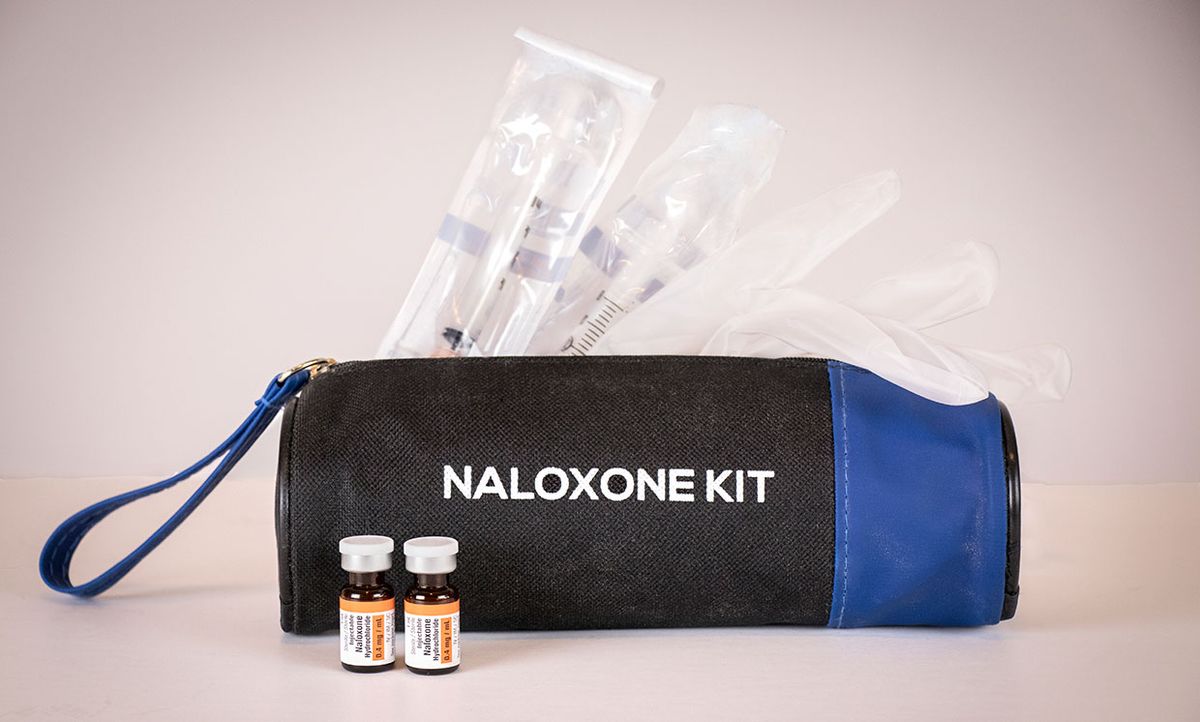If administered promptly enough, naloxone can chemically reverse an opioid overdose and save a person’s life. However, timing is critical–quicker administration of the medication can not only save a life, but also reduce the chances that brain damage will occur.
In exploring new ways to administer naloxone faster, a team of researchers has harnessed an effective, community-based approach. It involves an app for volunteers, who receive an alert when another app user nearby indicates that an overdose is occurring and naloxone is needed. The volunteers then have the opportunity to respond to the request.
A recent pilot study in Philadelphia shows that the approach has the potential to save lives. The results were published November 17 in IEEE Pervasive Computing.
“This concept had worked with other medical emergencies like cardiac arrest and anaphylaxis, so we thought we could have success with transferring it to opioid overdoses,” says Gabriela Marcu, an assistant professor at the University of Michigan’s School of Information, who was involved in the study.

The app, called UnityPhilly, is meant for bystanders who are in the presence of someone overdosing. If that bystander doesn’t have naloxone, they can use UnityPhilly to send out an alert with a single push of a button to nearby volunteers who also have the app. Simultaneously, a separate automated call is sent to 911 to initiate an emergency response.
Marcu’s team chose to pilot the app in Philadelphia because the city has been hit particularly hard by the opioid crisis, with 46.8 per 100,000 people dying from overdoses each year. They piloted the UnityPhilly app in the neighborhood of Kensington between March 2019 and February 2020.
In total, 112 participants were involved in the study, half of whom self-identified as active opioid users. Over the one-year period, 291 suspected overdose alerts were reported.
About 30% of alerts were false alarms, cancelled within two minutes of the alert being sent. On the other hand, at least one dose of naloxone was administered by a study participant in 36.6% of cases. Of these instances when naloxone was administered, 96% resulted in a successful reversal of the overdose. This means that a total of 71 out of 291 cases resulted in a successful reversal.
Marcu notes that there are many advantages to the UnityPhilly approach. “It has been designed with the community, and it's driven entirely by the community. It's neighbors helping neighbors,” she explains.
One reported downfall of the approach with the current version of UnityPhilly is that volunteers only see a location on a map, with no context of what kind of building or environment they will be entering to deliver the naloxone dose. To address this, Marcu says her team is interested in refining the user experience and enhancing how app users can communicate with one another before, during, and after they respond to an overdose.
“What's interesting is that so many users still remained motivated to incorporate this app into their efforts, and their desire to help others drove adoption and acceptance of the app in spite of the imperfect user experience,” says Marcu. “So we look forward to continuing our work with the community on this app… Next, we plan on rolling it out city-wide in Philadelphia.”
Michelle Hampson is a freelance writer based in Halifax. She frequently contributes to Spectrum's Journal Watch coverage, which highlights newsworthy studies published in IEEE journals.



